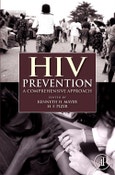HIV/AIDS continues to be the pandemic of our times and there has not been a comprehensive medically based AIDS prevention book published in the last 5 years. It is estimated that 36 to 45 million people including 2-3 million children already are infected worldwide and an additional 4-7 million more are infected each year. There are about 6,000 new infections daily and about 12 million AIDS orphans. People receiving AIDS treatments feel well and have no detectable viral load, but still can infect others. And even when a vaccine is found, it will take many years before it can be administered across the developing world.
Please Note: This is an On Demand product, delivery may take up to 11 working days after payment has been received.
Table of Contents
IntroductionI. Section I: Contexts and Principles: epidemiology, applied virology, microbiology, infectious disease and behavioural psychology applied to the design of AIDS prevention interventions
Chapter 1: Current And Future Trends: Implications For Prevention
Chapter 2. Biology of HIV Transmission
Chapter 3: Principles and Theories of Behavior Applied to HIV Prevention
II. Section II: Evidence-Based Prevention Interventions: programs for at-risk populations
Chapter 4. Individual Interventions
Chapter 5. Dyadic and Group Interventions
Chapter 6. Structural Interventions in Societal Contexts
Chapter 7: Voluntary Counselling and Testing
Chapter 8: Interventions With Men Who Have Sex With Men
Chapter 9. Interventions With Injecting Drug Users
Chapter 10: Interventions With Sex Workers
Chapter 11: Interventions With Youth in High Prevalence Areas
Chapter 12: Interventions With Incarcerated and Institutionalized Persons
Chapter 13. Preventing Perinatal Transmission
III. Policy, Technology and Research: Biomedical technologies for prevention, testing and research
Chapter 14. Harm Reduction and Public Health
Chapter 15. STD Control for HIV Prevention
Chapter 16 Using Antiretrovirals to Prevent HIV Transmission
Chapter 17 Microbicides
Chapter 18 Vaccines
Chapter 19. Program Monitoring and Evaluation








